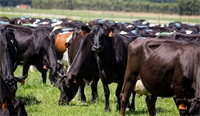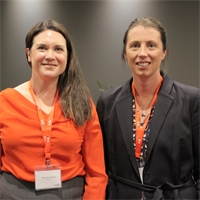17Dec
Measure or model—decision support for Irrigation Best Practice
WORDS & IMAGES PROVIDED BY IRRIGATIONNZ
In irrigation management, it is interesting to consider the old adage that “You can’t manage what you don’t measure”. Or could that be, what you can only model?
There are some considerable differences between measuring on-site data and relying on models and this applies to our decisions on freshwater use as well as when it comes to compliance verification. Each approach offers valuable insights, but understanding their limitations and applications is crucial for optimising water use and enhancing productivity. The question often isn’t whether one method is superior to the other, but rather how they can complement each other to deliver informed and defensible decisions on resource management and system performance.
Weather modelling through virtual climate stations provides extensive data that can forecast rainfall, temperature, and evapotranspiration across a region. These models are essential for planning irrigation schedules over a season and give growers an overview of changing climate conditions. However, they can lack the precision of site-specific monitoring. On-site weather stations can capture microclimate variations – such as local wind patterns or unexpected rainfall events – that might significantly affect irrigation needs. Models are generally only as accurate as their input data, and localised observations help bridge the gap between predicted and actual conditions, creating greater confidence in decision-making.
When it comes to monitoring soil moisture, farmers often face a similar choice: soil moisture sensors installed in paddocks or water balance calculations. Soil moisture sensors when correctly selected and positioned can provide direct feedback from the root zone, identifying when crops risk experiencing stress or when water application is needed. However, sensors can be limited by placement and soil type suitability; a limited number of sensors cannot fully represent the variability across a paddock, especially in diverse soil types. Water balance models, which track irrigation inputs, precipitation, and crop water use over time, offer a broad perspective. But they make big assumptions about whether the irrigation system is functioning as designed and that water is being uniformly distributed. Integrating sensor feedback with water balance models helps ensure growers aren’t relying too heavily on assumptions that may mask field-specific issues.
Another area where measurement and modelling must work together is irrigation system efficiency. Well-designed irrigation systems are designed based on detailed site-specific engineering factors that provides data to model flow rates, pressures, and application uniformity under ideal conditions. But these designs can only remain effective if the equipment performs as expected over time. Regularly taking flow and pressure measurements from key points within the system helps confirm that it operates according to the original design specifications. These readings also allow farmers to identify maintenance needs, such as clogged emitters or pump inefficiencies, which can reduce water application efficiency and increase operating costs. Relying solely on modeled design expectations without ongoing measurement can lead to missed opportunities for optimisation and reduced system performance over time.
The effectiveness of irrigation practices can be assessed both in real-time and through post-season reviews, each providing different but essential insights. Real-time data enables farmers to respond immediately to changing conditions, adjusting irrigation schedules to maximise crop water uptake and prevent over watering or stress. This proactive management reduces wastage, enhances productivity, and supports better resource allocation. However, reviewing performance at the end of the season offers the chance to evaluate long-term outcomes, such as crop yields, water use efficiency, and the cumulative impact on soil health. These reviews inform future strategies, helping farmers refine practices based on evidence rather than just modeled assumptions. Effective irrigation is not a matter of choosing between immediate or retrospective analysis, but about using both to achieve continuous improvement.
In managing irrigation, confidence plays a pivotal role in decision-making. Confidence is not just about trusting the tools or data but about understanding the variability and limitations of each source of information. When data from soil moisture sensors aligns with water balance models, or when weather station observations confirm modelled forecasts, farmers can act with a higher degree of certainty. Confidence also extends to the operational side – knowing that an irrigation system is running according to its design provides assurance that water is being used as effectively as possible. Where inconsistencies arise, confidence means having the information and tools needed to adjust systems or practices in a timely manner.
Good decision-making in irrigation is not about achieving perfect outcomes every time, we are dealing with biological uncertainty. However, it is about making defensible choices based on the best available information. Balancing measurements with models offers a pathway to more refined irrigation management, ensuring water is used where and when it is needed most. Integrating these approaches allows farmers to navigate the complexity of natural systems, maximising productivity while maintaining a responsible approach to water use. In an environment where climate conditions are becoming increasingly unpredictable, the ability to measure and model with accuracy provides the foundation for resilient and effective irrigation management.
STEPHEN MCNALLY, IS THE PRINCIPAL TECHNICAL ADVISOR, IRRIGATIONNZ SMCNALLY@ IRRIGATIONNZ.CO.NZ
Related

For the next three months we are looking at the final sprays for finishing off our cereal and grass ...
Read More

The longer days and creeping warmth signal that it’s time to look ahead and plan for the summer mon...
Read More

There’s a convenient, cost-effective way to keep your nitrogen investment in the ground for plant u...
Read More

Strategically and at a governance level the Ruralco co-operative has been unwavering in its focus to...
Read More

In the summer of 2014, Bernard Jordan (Michael Caine) made global headlines. He had staged a great e...
Read More

Stovetop potpourri is a delightful and easy way to fill your home with inviting scents. It involves ...
Read More